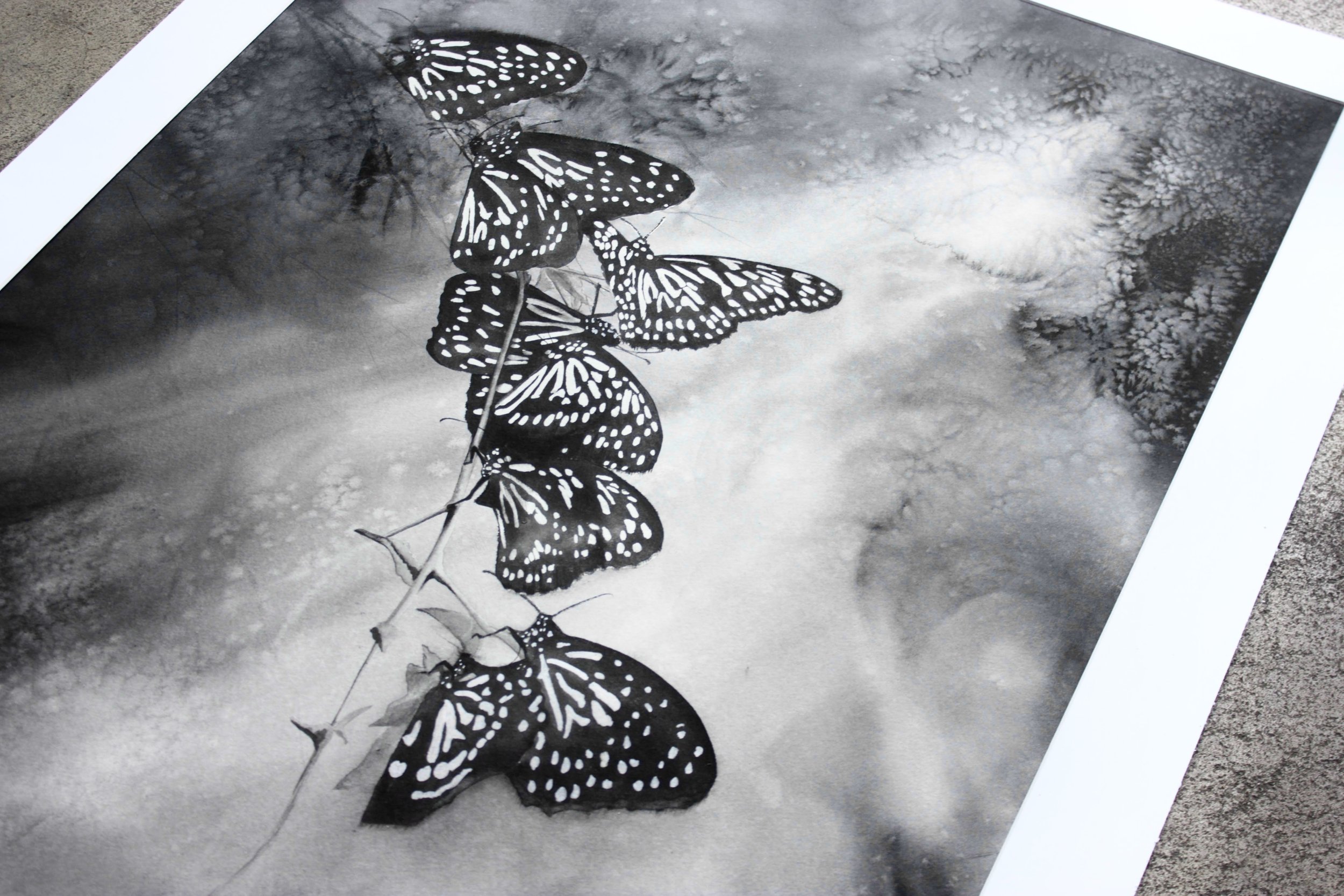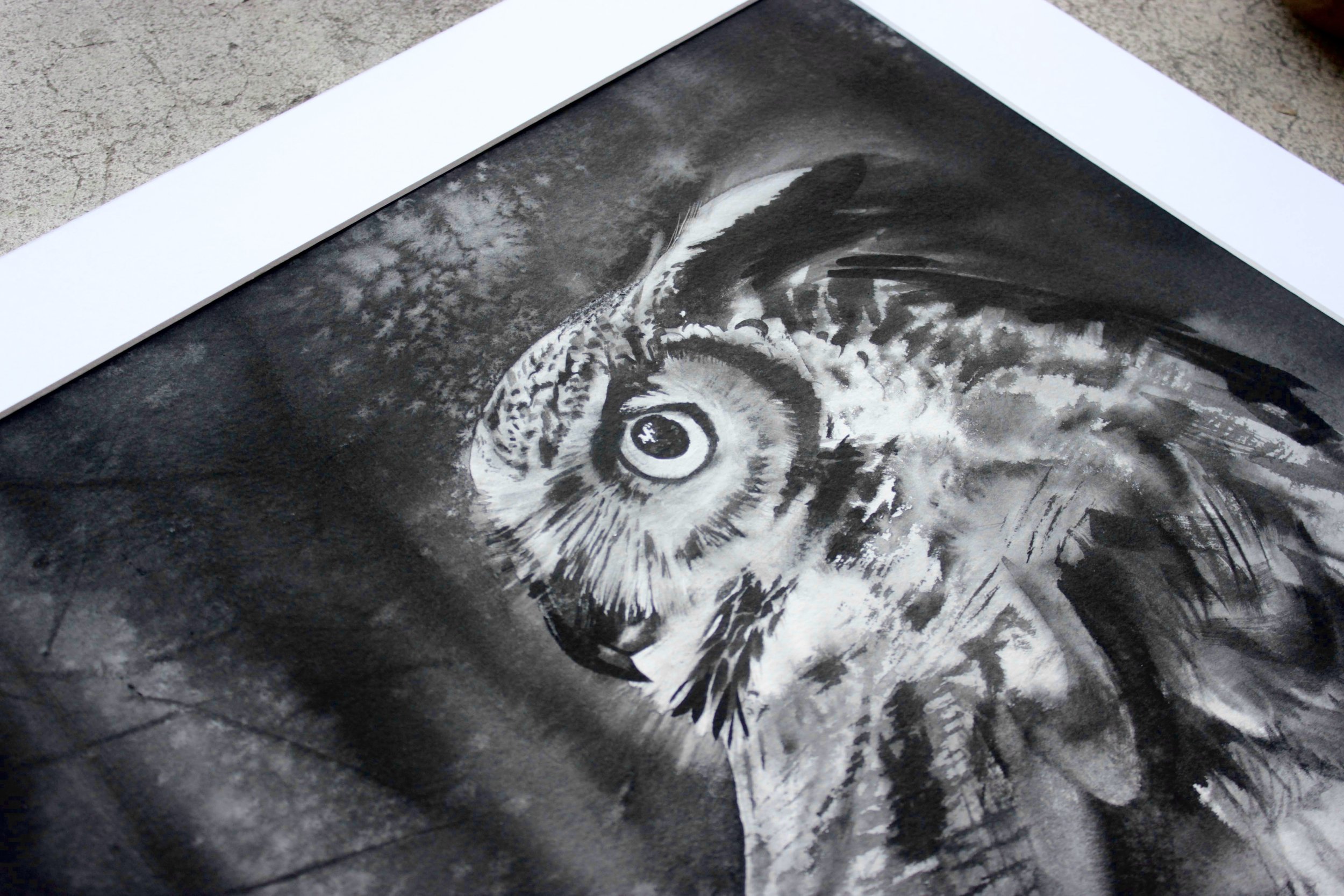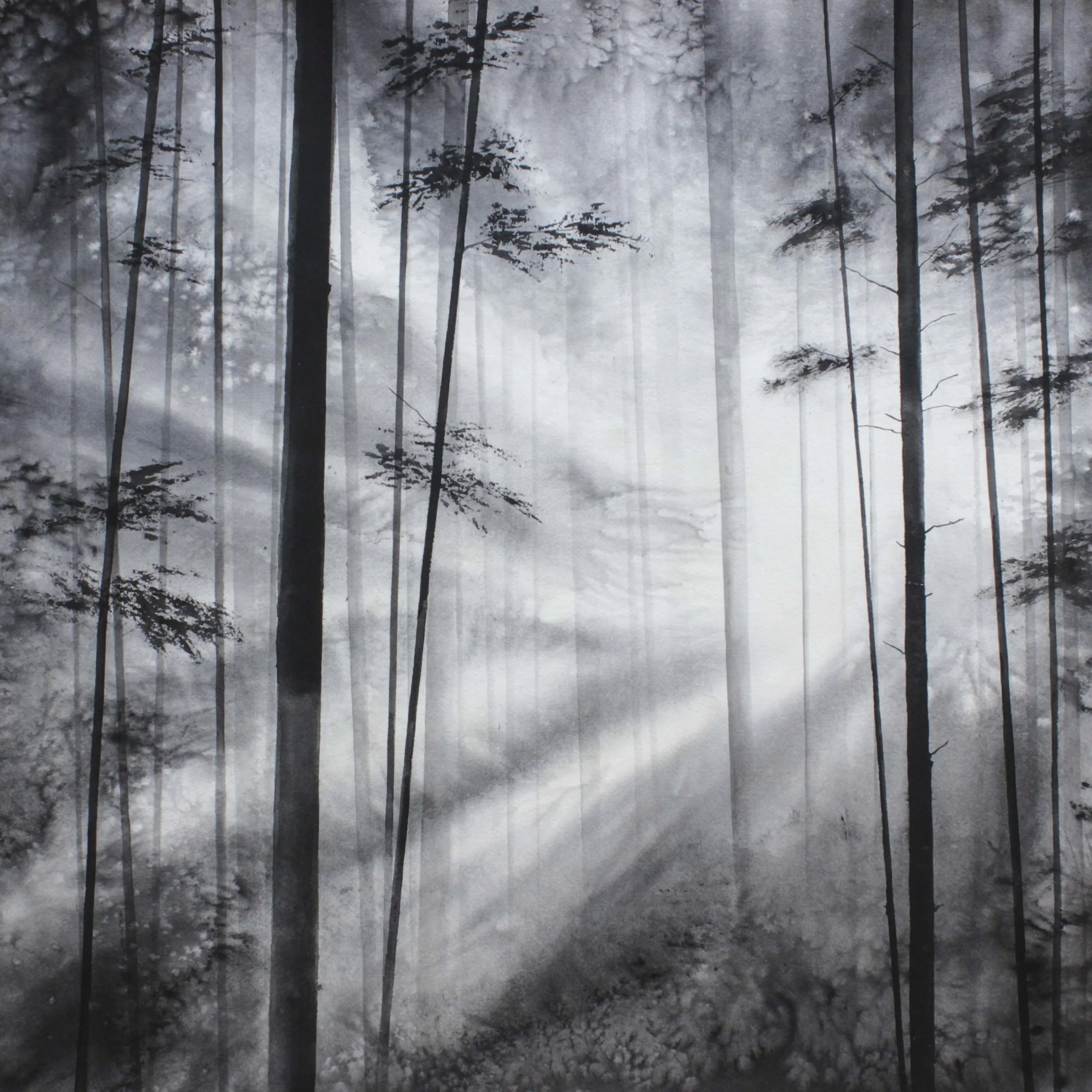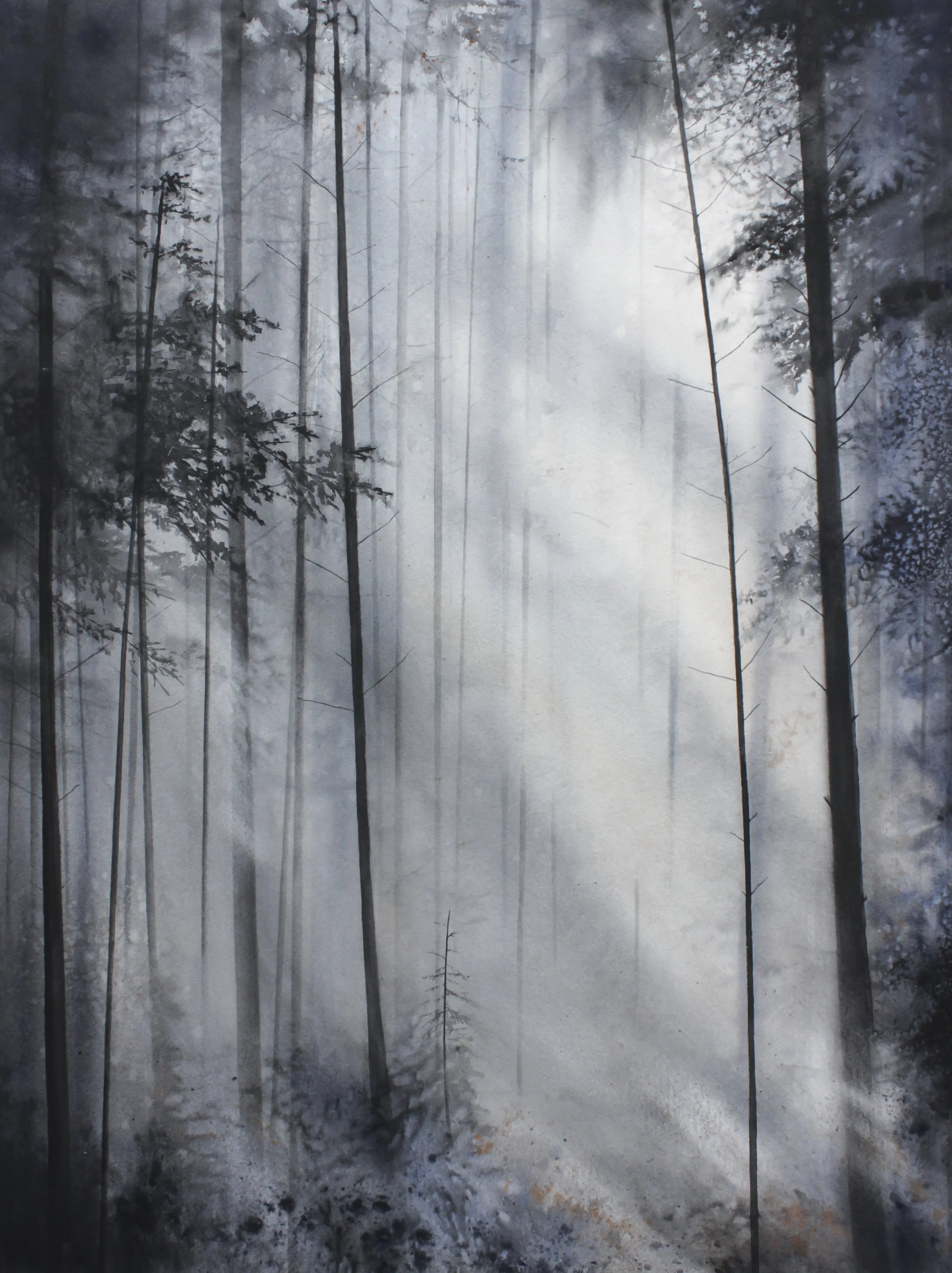In the Absence of Color
Art has a way of speaking to the soul. It resonates within us, whether it be to the subject or to the medium. Occasionally, both, and when that happens, it’s a soul-captivating moment that somehow seems inexplicable and compelling. That was and still is, black and white photography for me.
Color has long been celebrated in the arts, historically and culturally, and now more than ever, artists have access to such a vast array of both natural and synthetic pigments.
So begs the question, why would I choose to paint with a single shade of black in many of my works?
To fully understand the answer to this question, I should first share that before painting in watercolor, I spent my former years as a photographer. My first exposure to photography was love at first sight during a year abroad as an art student where I visited a photography exhibition at La Maison Européean de la Photographie in Paris.
If you are anything like me, art has a way of speaking to the soul. It resonates within us, whether it be to the subject or to the medium. Occasionally, both, and when that happens, it’s a soul-captivating moment that somehow seems inexplicable and compelling. That was and still is, black and white photography for me.
Once I began painting, rather than retiring old notions and lessons learned from my days in photography. I found I naturally adapted photographic techniques to the way I would conceive and create a painting. Composition, contrast and the use of light to name a few, focusing in on the photographic elements I wanted to try and achieve. Since I naturally gravitate toward black and white images, within a short time I found myself questioning whether it was acceptable within the world of watercolor to create paintings exclusively in black. It wasn’t much longer till I decided, if there was a rule, I was going to break it!
Outside of the simple fact that I have a passion for black and white images, here are some unique benefits I believe the absence of color can provide.
Enhanced Texture and Detail:
Without the distraction of color, black and white draws attention to the fine details in fur, feathers, skin, and other natural textures. The contrast between light and shadow becomes more pronounced, highlighting subtle patterns that might otherwise go unnoticed.
Strong Contrast and Mood:
Black and white images often carry a dramatic, timeless quality. High-contrast lighting can create striking visuals, accentuating the ruggedness of a forest or an animal’s features.
Focus on Composition:
By stripping away color, the viewer’s attention shifts to composition, shapes, lines, and tonal balance. This can lead to more powerful, minimalist images where form and structure take center stage.
Snow Leopard, Watercolor, 2024
Emotional Impact:
Black and white images can evoke a range of emotions more intensely. It often feels more raw and authentic, making it ideal for capturing the essence and spirit of nature.
Timelessness:
Color trends come and go, but black and white images often have a classic, enduring appeal. They feel less tied to a specific era, which can make wildlife portraits for example, feel classic.
Creative Freedom:
Just like shooting in black and white, painting exclusively with black pigment allows for more artistic interpretation. I can push contrast, tones, and play with light in ways that might look unnatural in color but feel cohesive in monochrome.
Creating emotive and impactful artwork is at the core of my desire to paint and though I go through cycles of painting in color, I know that there will always be something personally compelling and satisfying about a bold yet delicate black and white painting I create.
To end, I’d love to share my favorite black watercolors with you! Both are from Daniel Smith and you can find their paints at most art supply stores. I use Lamp Black for the majority of backgrounds and areas of solid color. I use Lunar Black more sparingly, a super granulating pigment perfect for texture.
Painting Light; Komorebi
The concept of Komorebi has inspired artists, poets and photographers alike as it embodies a serene and almost meditative quality. In many ways, komorebi reminds people to pause, observe and find beauty in everyday moments that might otherwise go unnoticed.
Rays of Renewal, watercolor. (Awarded Best of Show, MGAL Juried Winter Art Show 2024)
Komorebi is a Japanese word that describes the beautiful phenomenon of sunlight filtering through the leaves of trees. While there is no direct English equivalent, komorebi captures the poetic interplay of light and shadow, evoking a sense of tranquility, nostalgia and connection to nature. This fleeting moment, where dappled sunlight dances through the branches, embodies the Japanese appreciation for subtle, transient beauty that can transform ordinary spaces into something magical.
Radiance, Watercolor, 2024
This concept has inspired artists, poets and photographers alike as it contains a serene and almost meditative quality. In many ways, komorebi reminds people to pause, observe and find beauty in everyday moments that might otherwise go unnoticed.
Dawn’s Whisper, watercolor, 2024
Whether captured in art, literature or personal reflection, komorebi serves as a gentle reminder of nature’s quiet wonders and the importance of mindfulness in an ever-moving world.
I realise that perhaps like many of you, I experienced this phenomenon even before I knew of its concept and origin. About a year into painting full time, my eyes were starting to open up to the world around me and I began to notice details in nature I’d overlooked on my daily walk or run and have to stop to take in the breath taking moment, in awe of the dispersed rays of light breaking through the thick, dense canopy and feeling the warmth touch my skin. The feeling was overwhelmingly beautiful and in turn I hoped to capture that sense in my paintings.
Creating komorebi in a watercolor painting requires a delicate balance of light and shadow to capture the effect of sunlight filtering through leaves. Here’s a step-by-step approach to how I attempt to achieve this ethereal look:
1. Plan the Composition
I start by sketching a rough outline of my scene focusing on the placement of trees and leaves, leaving open spaces where the sunlight will filter through. Next I decide on the light source and how the dappled light will fall and which areas will be cast into shadow.
2. Use a Light, Layered Approach
Watercolor is perfect for capturing the softness of komorebi. I begin with a light wash of paint in the areas where the sunlight will shine through leaving some areas of complete transparency.
3. Create Depth with Negative Painting
Negative painting is an effective technique for komorebi. Instead of painting the light directly, I add darker triangular sections with a dryer brush which will be the areas of shade. I then sparingly sprinkle salt grains and let it dry to create a soft, diffused effect.
4. Add Soft Shadows and Details
Once dry, I use straight strips of watercolor paper and an angular brush to create soft and light layers of vertical tree trunks using a damp cloth to lift some of the paint where the light rays would illuminate the trunk. For realistic textures, I use a dry brush or splattering technique to mimic the scattered, uneven light using a spray bottle to further diffuse.
5. Maintain a Soft, Dreamlike Quality
In the first layers, I avoid harsh edges, as komorebi is a natural, fluid effect. These abstract and undefined areas evoke the ever-changing quality of light passing through moving leaves.
6. Build Contrast with Pigment
For the trees that are closest to the viewer, I use darker pigment to allow for a silhouette effect. The paper must be completely dry for this stage to avoid bleeding. I finish by adding a few more darker and defined branches and marks with the brush that appear like leaves.
Cascading Light, watercolor, 2024
By using transparency, layering and negative space, you can create watercolor paintings that capture the enchanting essence of komorebi, bringing the warmth and serenity of dappled sunlight to life on paper.









